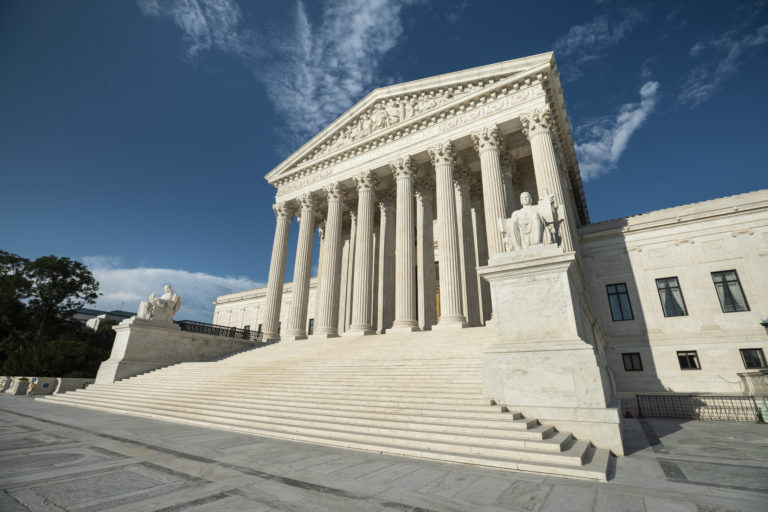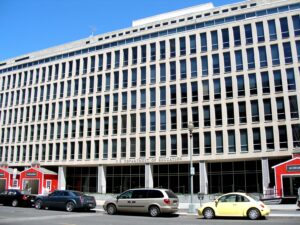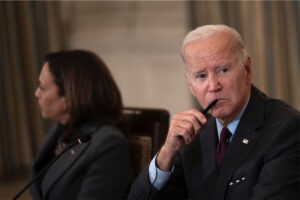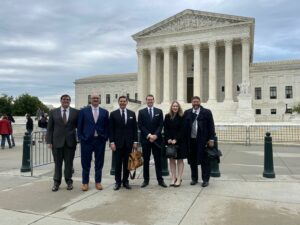The Hill: Expect more headlines from the Supreme Court in the new year

After an action-packed start to the term, the Supreme Court returns to the bench next week for the first winter oral argument sitting. And while the term was frontloaded with headline-grabbing cases, the court has a few high-profile cases coming up — and even more waiting in the wings.
In February, the justices will hear two cases involving whether tech companies can be held responsible for content posted by their users. In Gonzalez v. Google and Twitter v. Taamneh, the families of victims of ISIS terrorist attacks sued Google, Twitter and Facebook for allowing ISIS to use these platforms to post videos, recruit members, and generally spread their message. The cases turn on whether big-tech companies are editorializing when they create platforms that use algorithms to promote and recommend third-party content.
Federal law allows U.S. nationals or their survivors to seek damages for injuries caused “by reason of an act of international terrorism” against anyone who “aids and abets, by knowingly providing substantial assistance” to the acts of terrorism. The families argue that, because the tech companies did not remove ISIS’s content, they are liable for murders that occurred during ISIS attacks in Paris, Istanbul and San Bernardino, Calif.
The tech companies maintain that Section 230 of the Communications Decency Act immunizes them from liability for content created by third parties. The lower court issued a mixed result, and the Supreme Court has been asked to consider whether Section 230 immunizes the tech companies. The outcome likely will renew debates about regulating big tech, which has been a hot topic on Capitol Hill — a fact that may weigh on the justices’ minds. There are more cases making their way to the court challenging state laws that seek to regulate social media companies, so there’s a good chance this won’t be the last the justices hear about reining in big tech.
Also in February, the Supreme Court will hear two cases challenging President Biden’s student loan forgiveness plan. Last August, the Biden administration announced a plan to forgive $20,000 in federally held student loans for an estimated 40 million borrowers. The administration relied on the HEROES Act, which was passed during the Iraq War to temporarily relieve servicemembers and their families of certain student loan obligations. The Education Department did not engage in the usual rulemaking process — which includes public notice and comment — before rolling out the plan.
Several groups (including my employer, _Pacific Legal Foundation_) challenged the plan before it went into effect. Two cases have reached the Supreme Court. In Biden v. Nebraska, several states argue that the half-trillion-dollar plan will harm a state-run loan servicer. In Department of Education v. Brown, two borrowers claim they were harmed by not being able to comment on the proposed plan before it was finalized. The Biden administration maintains that none of these parties has standing to sue because they haven’t suffered any concrete injury. Identifying parties harmed by the plan has been difficult because the administration continually “revised” it on the fly to shut down lawsuits.
There also are several interesting petitions that the Supreme Court has not taken up, but may soon.
Petitions filed by_ Pacific Legal Foundation _— Fair v. Continental Resources, Tyler v. Hennepin County, Minnesota, and Nieveen v. TAX 106 — ask the Supreme Court to rule on the constitutionality of a practice called “home equity theft.” This is when municipal governments seize people’s property when they fall behind on their taxes, sell it, and then keep all the money from the sale — including any excess beyond the taxes owed. In one case, a Michigan man underpaid his property taxes by $8.41 and the county sold his home and kept the full $24,500.
The petitions argue this practice violates the Fifth Amendment’s prohibition on government taking private property without just compensation and the Eighth Amendment’s bar on excessive fines. The states that engage in this practice assert that people are given sufficient notice to protect their property interests. There is a deepening split between several federal courts and state supreme courts on the constitutionality of the practice of taking property in this manner and keeping more than what is owed.
Another petition to watch is Loper Bright Enterprises v. Raimondo, which challenges a controversial legal doctrine that helped aid in the growth of the regulatory state. Under the doctrine known as Chevron deference, judges are required to defer to a regulatory agency’s reasonable interpretation of ambiguous statutes the agency is charged with carrying out. This case involves the Magnuson-Stevens Act, which authorizes the Commerce Department to require commercial fishing boats to carry observers who monitor their compliance with a web of federal regulations.
The Commerce Department interprets the law to permit it to force the fishermen to pay these observers’ salaries, despite the statute not expressly authorizing this. The lower court held that the Commerce Department’s argument was a “reasonable way” of resolving statutory silence on the matter of paying these observers. Recently, the Supreme Court declined to jettison Chevron while also distancing itself from the doctrine. Meanwhile, the doctrine runs rampant in the lower courts.
These are just a few cases to keep an eye on when the Supreme Court returns. The justices also may start issuing opinions in cases they heard in the fall, but we likely won’t see opinions in the biggest cases of the term until late spring or summer.
This op-ed was originally published at The Hill on January 03, 2023.









